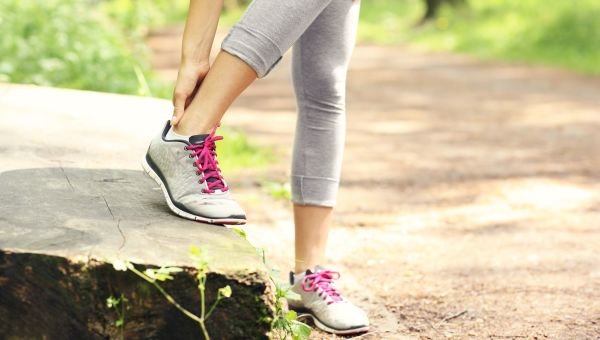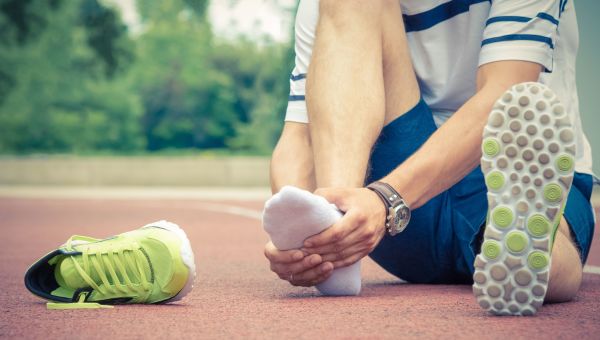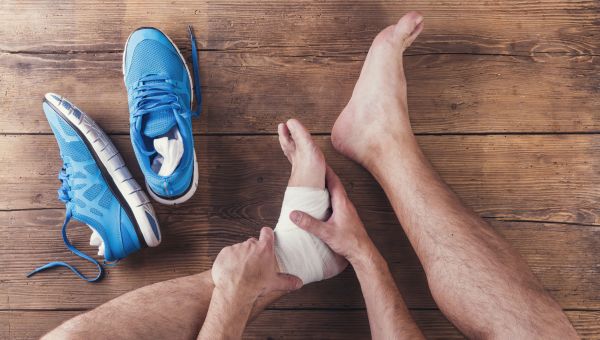5 beginner workout injuries and how to prevent them
Beginner cyclist, runner, jogger or hiker? Avoid these common injuries with some advice from an expert.

Trying a new sport or workout for the first time can be intimidating. From picking out the proper athletic wear to mastering the equipment, there’s a lot that goes into working out. Not to mention the possibility of injury, which often deters people from exercising. But beginner exercise injuries are not inevitable and in many cases, can be prevented.
“Don't let the… Show More
Trying a new sport or workout for the first time can be intimidating. From picking out the proper athletic wear to mastering the equipment, there’s a lot that goes into working out. Not to mention the possibility of injury, which often deters people from exercising. But beginner exercise injuries are not inevitable and in many cases, can be prevented.
“Don't let the prospect of potentially getting an injury prevent you from exercising,” says Dr. Abdurrahman Kandil, MD out of StoneSprings Hospital Center in Dulles, Virginia. After all, the health benefits of routine exercise are numerous, ranging from heart health to improved mood and cognitive function.
Starting off slowly and gradually increasing exercise intensity over time will help you master that field, turf or pavement in no time.
Show Less
Knee pain
If you have a dull, aching pain around your kneecap, you could have runner’s knee. Also called patellofemoral pain syndrome, runner’s knee occurs when the patella (kneecap) rubs against the femur bone. The injury is most common amongst people who participate in running or jumping sports. Pain often… Show More
If you have a dull, aching pain around your kneecap, you could have runner’s knee. Also called patellofemoral pain syndrome, runner’s knee occurs when the patella (kneecap) rubs against the femur bone. The injury is most common amongst people who participate in running or jumping sports. Pain often increases after sitting for long periods of time or walking up or down stairs. While doctors aren’t entirely certain what causes runner’s knee, it’s believed that overusing the knee joint can cause irritation.
To prevent runner’s knee, the most important thing you can do is gradually increase your intensity over time. “It's important not to increase the frequency or the intensity of your exercise by more than 10 percent each week,” says Dr. Kandil. For example, if you’re training for a 5K, you shouldn’t run half a mile one week, then three miles the next. Up your exercise intensity and duration a little bit each week.
If your knee pain persists, you might consider seeing a doctor or a physical therapist who can provide rehabilitation exercises to strengthen the muscles that support the knee. Taking a break, stretching, trying arch supports and wearing a supportive brace could help while you seek out a professional.
Show Less
Achilles tendinopathy
Repeated stress can lead to Achilles tendinopathy, which causes pain and stiffness in the back of the heel. Because the Achilles tendon is the largest tendon in the body and is used during everyday activities like walking, this heel pain is usually due to overuse.
If your calf muscles are weak, it… Show More
Repeated stress can lead to Achilles tendinopathy, which causes pain and stiffness in the back of the heel. Because the Achilles tendon is the largest tendon in the body and is used during everyday activities like walking, this heel pain is usually due to overuse.
If your calf muscles are weak, it puts extra stress on the Achilles tendon. For new runners or joggers, you can avoid Achilles tendinopathy by strengthening your calf muscles with exercises such as heel drops before exercising. To perform a single leg heel drop, stand at the edge of a stable, raised platform such as a stair. With just the ball of your foot on the stair, drop your heels below the edge of the stair, then return to the starting position.
Running on roads or sidewalks? Repetitively hitting harder surfaces while you run may also cause Achilles tendinopathy. Trade the pavement for softer surfaces like turf, grass or track.
If you do develop Achilles tendinopathy, try icing the injured region for 15 to 20 minutes, two to three times a day. An over the counter, anti-inflammatory medication may help, too.
Show Less
Iliotibial band syndrome
The iliotibial band (more commonly known as the IT band) is made up of thick connective tissue, which runs down the outside of the thigh and connects to the shinbone. The exact source and cause of pain in the IT band still remains unclear. To help prevent IT band syndrome, make sure to practice… Show More
The iliotibial band (more commonly known as the IT band) is made up of thick connective tissue, which runs down the outside of the thigh and connects to the shinbone. The exact source and cause of pain in the IT band still remains unclear. To help prevent IT band syndrome, make sure to practice proper form when you exercise. Pileggi suggests a pre-exercise evaluation by a trainer to help identify musculoskeletal problems prior to physical activity. You can also try some at-home stretches to loosen up the IT band.
If you do experience pain, proper rest, stretching and icing the area should help alleviate it. Surgery is usually unnecessary.
Show Less
Plantar fasciitis
Plantar fasciitis is an inflammatory injury that affects the thick band of tissue running along the bottom of the foot, resulting in pain. The pain often worsens after exercise. Any type of workout that puts repeated pressure on the heel, such as dancing and long distance-running, can cause… Show More
Plantar fasciitis is an inflammatory injury that affects the thick band of tissue running along the bottom of the foot, resulting in pain. The pain often worsens after exercise. Any type of workout that puts repeated pressure on the heel, such as dancing and long distance-running, can cause irritation. Try stretching your arches and calves prior to running, especially if you know your heels are a common trouble-spot.
If stretching doesn’t help, you can always take a break and try a low-impact sport. “Swimming, cycling and elliptical machines all provide excellent cardiovascular workouts without exposing the foot and knee to impact and excessive loads that running would,” says Kandil.
Rest your feet while the area heals. If you have plantar fasciitis, pain is often worse when you first get out of bed. Try rolling your foot over a tennis ball or a frozen water bottle (wear thick socks if you do) when you first get up in the morning—it may help relieve the pain.
Is your pain keeping you up at night? Wearing a splint while you sleep could help loosen the tissue. In more severe cases with persistent pain, your doctor may suggest cortisone shots, as well.
Show Less
Sprained ankle
A sprained ankle can occur during a variety of activities, from walking on an uneven surface, to twisting your foot during a trail run or a game of soccer. The outer part of the ankle is most commonly sprained when the supporting ligaments stretch beyond their normal capacity and tear.
Exercises… Show More
A sprained ankle can occur during a variety of activities, from walking on an uneven surface, to twisting your foot during a trail run or a game of soccer. The outer part of the ankle is most commonly sprained when the supporting ligaments stretch beyond their normal capacity and tear.
Exercises are typically recommended to restore strength and flexibility in the prevention of future sprains. But there has been some discussion about which type of exercises and stretches, (static or dynamic), are most beneficial. “I think at the end of the day, doing some form of stretching before and after workouts may help decrease the chance of developing an injury,” says Kandil.
Recovering from an ankle sprain may depend on the degree of injury. If your sprain is mild, treat the pain with RICE:
Rest. Take a break from any activity causing you pain.
Ice. Apply ice on the affected area 20 minutes every hour while you’re awake during the first 24 hours of the injury. After the first 24 hours, apply ice for 20 minutes three to four times a day.
Compression. Loosely wrap a bandage around your ankle to decrease swelling. If you need your ankle wrapped for longer than two to three days, you should talk to your doctor.
Elevation. Elevate the injured area by placing pillows underneath your leg. Try to keep your ankle above your heart to decrease swelling.
Once the pain and swelling in the affected area subsides, it may be possible to put weight on your foot. For more severe sprains where there’s a tear in the ankle ligaments, it may be necessary to wear a boot, brace or cast for several weeks to immobilize the ankle. Although surgery isn’t usually necessary, full tears that don’t heal with conservative treatment may need further examination.
Show LessMore On


video

slideshow


video


video
